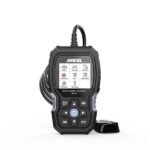Want to keep your dashcam running even when your car is parked? Many drivers seek a way to enable their dashcam’s parking mode without draining their car battery. One effective and increasingly popular method is utilizing an Obd2 Power Tap. Let’s explore how this works and why it might be the ideal solution for your dashcam power needs.
If your car’s cigarette lighter socket only provides power when the engine is running, you might think about directly wiring your dashcam to your car’s electrical system. However, tapping into your OBD2 port with an obd2 power tap offers a safer and simpler alternative. These adapters are readily available online and often come equipped with a low voltage cutoff switch, a crucial feature to protect your car battery.
For instance, consider using an obd2 power tap with a built-in battery saver, similar in function to the Koolatron “battery saver” mentioned for cigarette lighters. This type of obd2 power tap will automatically cut off power to your dashcam if your car battery voltage drops below a certain threshold, typically around 11.6 volts. This prevents your dashcam from excessively draining your battery, especially during extended parking periods.
When parked, dashcams ideally operate in standby or surveillance mode, utilizing G-sensor or motion activation to record only when necessary. Pairing this efficient recording mode with an obd2 power tap ensures your dashcam is powered for parking surveillance without the worry of a dead battery.
If your cigarette lighter is always on, you could use a cigarette lighter adapter with a low voltage cutoff. However, for vehicles with switched cigarette lighters, an obd2 power tap provides a cleaner installation. You can run a USB cable from your dashcam, tucking it neatly under your dashboard, and connect it to the obd2 power tap plugged into your OBD2 port.
A significant advantage of using an obd2 power tap is its ease of use and reversibility. When you need to access your OBD2 port for diagnostics or scanning, simply unplug the obd2 power tap. There’s no complex wiring involved, making it a user-friendly solution for powering your dashcam. Furthermore, the OBD2 port is designed to handle a certain power load, and dashcams typically draw very little power (2 amps or less), well within the OBD2 port’s capacity.
In conclusion, an obd2 power tap is a smart and convenient way to power your dashcam, especially for enabling parking mode. It offers a safe, easy-to-install, and reversible solution, protecting your car battery while ensuring your dashcam is ready to record when you need it most.
